Pig farming is an excellent business venture that brings ready cash anytime and is easy for every producer. However, operational efficiency is key to being competitive and successful for pig producers. It means converting feed, which accounts for about 75 percent of total production costs, into pork. Also, the greater genetic potential of animals is changing standard approaches to production practices. Below are the 17 key rules for effective Piggery management that can significantly contribute to a piggery unit’s success.
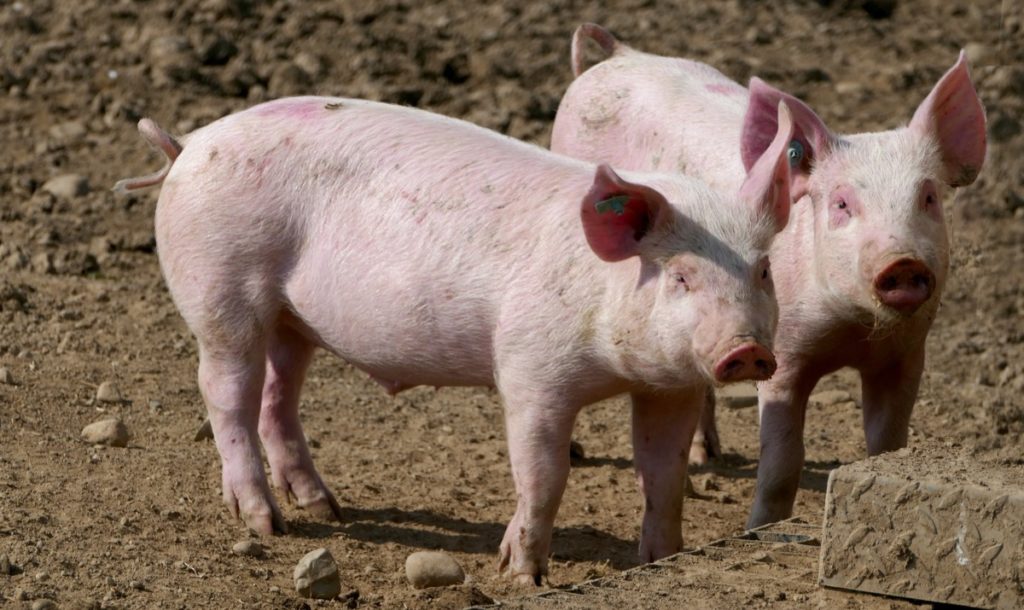
Key rules for effective Piggery management
Effective rules for the type of pig farm you are operating
Pig farming requires a small investment in buildings and equipment. Pigs are mainly known for their meat production, which is between 65 and 80% compared to other livestock animals whose dressing production cannot exceed 65%. Commercial pig raising is capital and labor-intensive business. Success requires excellent business management and pig farming knowledge and skills.
Raising even just a few pigs requires husbandry skills and attention to legal requirements. Therefore, before setting up a pig, several important elements must be considered. For example, you can run one of the following types of pig farms:
- Farrow-to-finish pig farm: This type involves breeding and raising sows until they are about 280 pounds. Do not reach market weight, including feeding offspring.
- Farrow-to-Feeder Pig Farm: This type involves breeding and raising sows and then selling the pigs for finishing work when they weigh 30 to 60 pounds.
- Feeder-to-fine pig farms: These types of pig farms buy feeder pigs when they weigh 30 to 60 pounds and feed them to market weight.
Selection of pig breeds for effective management
- Upgraded/crossbred or exotic stock in good health should be selected for commercial pig farming.
- When selecting a gilt or sow, the primary objective should be to secure a female that will produce viable litters and reach a marketable weight at six months of age or less.
- Animals that are ready for breeding should be selected.
- Identify the newly purchased animal by giving it an appropriate identification mark (ear tag or tattoo).
- Vaccinate animals against diseases. Keep the animal under observation for about two weeks and then mix it with other animals. Buy animals in two batches three months apart.
- Practice culling and replacing the animals in the herd correctly.
- Cut the older animals after 10 to 12 farrowing.
Proper breeding rules for pigs grow faster and get more production
Pigs grow faster than other livestock and reproduce twice a year with a gestation period of only 114 days. The sow gives birth to piglets at least twice a year, producing about ten piglets, thus usually increasing the farmer’s production when fully grown. Once a pig is established, the farmer should research the best types of breeds that perform best at the piggery location. A farmer should choose a breed that has good farming, good mothers, and high fertility and is not susceptible to infection.
In case you missed it: Pig Diseases, Symptoms, and Treatment
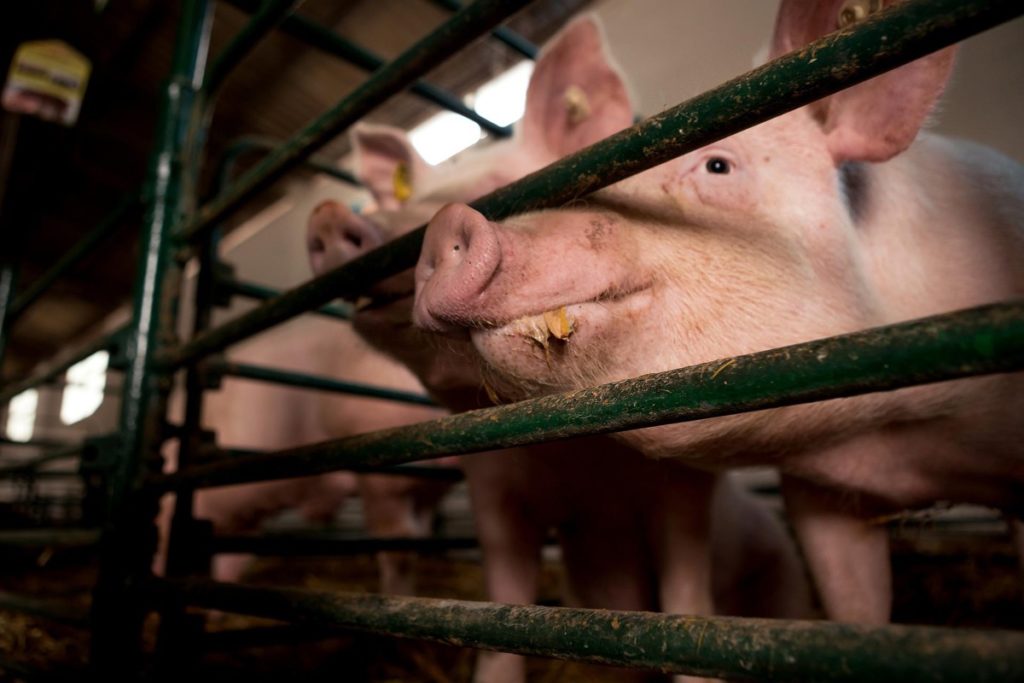
Key rules for selecting a pig farm location and housing
Pig farm location is an important factor in disease control. Ideally, a pig farm should be located in an isolated area far away from other animal farms. In areas with high pig densities, highly contagious diseases can spread easily. Disease problems on farms with high pig population densities illustrate the difficulty of preventing the spread of infectious diseases in areas where pig farms are located close together. In densely populated pig farm areas, it becomes difficult to prevent certain diseases on the farm.
The site should be on high ground where rainwater cannot flood. The site should be protected from the sun (shade of trees), and there should be plenty of fresh air. Away from residences (about 8-10 meters downstream). In the case of a large-scale pig farm, the site selected should also be well-connected by year-round roads, suitable for manure disposal, and connected to reliable water and electricity sources.
Management practices to increase the productivity of pigs
Pig farming is the livelihood of the rural poor who belong to the lowest socio-economic strata and have no means to carry out scientific pig farming with better foundation stock, adequate housing, feed, and management. Pigs have the highest feed conversion efficiency, i.e., they produce more live weight for a given feed than any other meat-producing animal except broilers.
Breeding care – Pigs are very prolific by nature, and two farrowing should be planned in a year adopting optimal management conditions. One boar should be maintained for every ten sows for maximum fertility—breed animals in the heat period (around 12 to 24 hours of heat).
Care during pregnancy – Pay special attention to pregnant sows by providing adequate space, food, water, etc., a week before harvesting. The farrowing pens and the sows should be sterilized 3-4 days before the expected harvest date, and the sows must be kept in the farrowing pen after bedding it properly.
Get training in raising pigs – Before starting a commercial pig business, it is essential to undergo proper training in pig rearing from established training centers and universities. The main objective of this training will be:
- To help you understand the nuances of this business.
- Tell you what environment you should raise pigs in to maximize their welfare.
- Enable you to build working relationships with managers and industry people.
- Help increase your firm’s financial stability, productivity, health, and efficiency.
Quality of pig farm design for profitability
The quality of pig farm design directly affects pigs’ health and profitability. Although it is not the only determinant of swine production quality, it can reduce mortality, promote growth, and increase feed efficiency. Moreover, pig farmers can save money when swine health conditions are less problematic. There are no shortcuts to success in pig farming, but building a good one is a great start.
Choosing housing that maintains the health and well-being of pigs can increase the quality of swine production. In designing a pig farm, you must consider the feeding regimen, pig slaughter weight, pig manure handling, and swine production plan. To effectively manage pigs, you must consider pig production and performance, identify ways to improve your herd, provide adequate housing, and manage your herd’s diet and environmental factors.
Issues should be monitored. Sow management requires investment in feed, skilled labor, and other overheads that are not directly linked to sow productivity. The fewer pigs a sow produces in a year, the more expensive the product. As the number of piglets weaned each year increases, production profitability also increases.
In case you missed it: Pig Farming in USA: How to Start
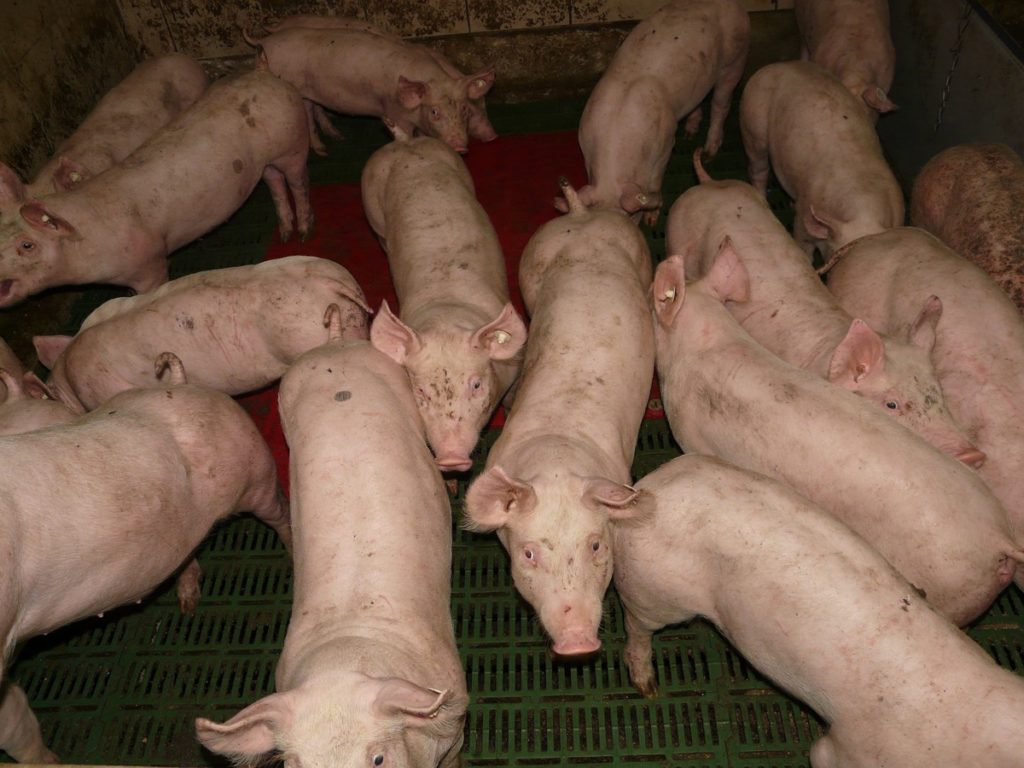
Maintain effective production management
- Feed – This is a significant part of the cost of growing a pig. The efficiency of use is very important, and nutritional value is very important compared to price. How it is delivered and made available to the pig can increase feed intake and maximize feed efficiency. Pigs should be fed a balanced diet with all the necessary nutrients and clean drinking water once or twice daily. Pigs consume about three to four kilograms of feed per day. The great thing about pigs is they eat a variety of food from leftovers, fruits, vegetables, kitchen scraps, agricultural waste, and more until it decomposes. Because it can make them sick, it saves most household vegetable scraps from waste. However, pork pellets are the best food.
- Type of housing used and quality of the environment.
- Disease levels and their economic impact. These are shown by significant improvements in daily gain and feed conversion when pigs are separated and weaned early or raised under different disease control conditions.
Key points to successfully raising pigs
Sufficient space for pigs – The key to raising pigs is ensuring they have enough space. In general, pigs need as little space as possible. Pigs barely run around and become active. Pigs spend most of their time eating, sleeping, and rooting. Keeping them in the field allows them to move around and breathe fresh air.
If you plan to keep them out, be prepared to go after their destructive behaviors. Be sure to take care of the damage they cause to the landscape and dedicate areas to rest. Keeping them in shelters can make monitoring their health and eating habits easier. This also allows you to control their ventilation and manage the manure. Either way, it is recommended that you allocate at least 8 square feet of space for each pig.
Climate control system – A comprehensive climate control system is important in pig farming. In extreme temperatures, pigs may experience discomfort affecting their appetite, growth, and reproduction. Maintaining adequate ventilation is key to keeping the shelter between 18 and 22 degrees for adult pigs and higher for piglets. The ventilation of the pig farm can be either mechanical or natural to provide adequate cooling in summer and heat in winter.
- Natural ventilation system: Uses doors and panels to promote air circulation in the shelter.
- Mechanical Ventilation System: Eliminates toxic odors, moisture, dirt, and other harmful organisms that prevent adequate ventilation around the shelter. This requirement requires a pig-form exhaust fan.
Tips for pig health management
Add nutritional supplements early in life – Special nutritional products can be used to support the vitality of small or weak piglets immediately after birth. Liquid formulations of essential oils are used for their appetite-enhancing, strong antimicrobial, and anti-oxidative effects. Additionally, they can contain medium-chain fatty acids, which provide pigs with the rapid energy they need.
Vitamin E supplementation supports the development of the immune system. Such products can help weak piglets on the first day of life to reduce mortality during the first few hours. A typical dose is 1 to 2 ml per piglet, injected directly into the mouth once, twice, or thrice per day, after which the piglet’s appetite can be expected to increase.
In case you missed it: Earning 20 Lakh Per Year from Raising Pigs – A Success Story of a Pig Farmer
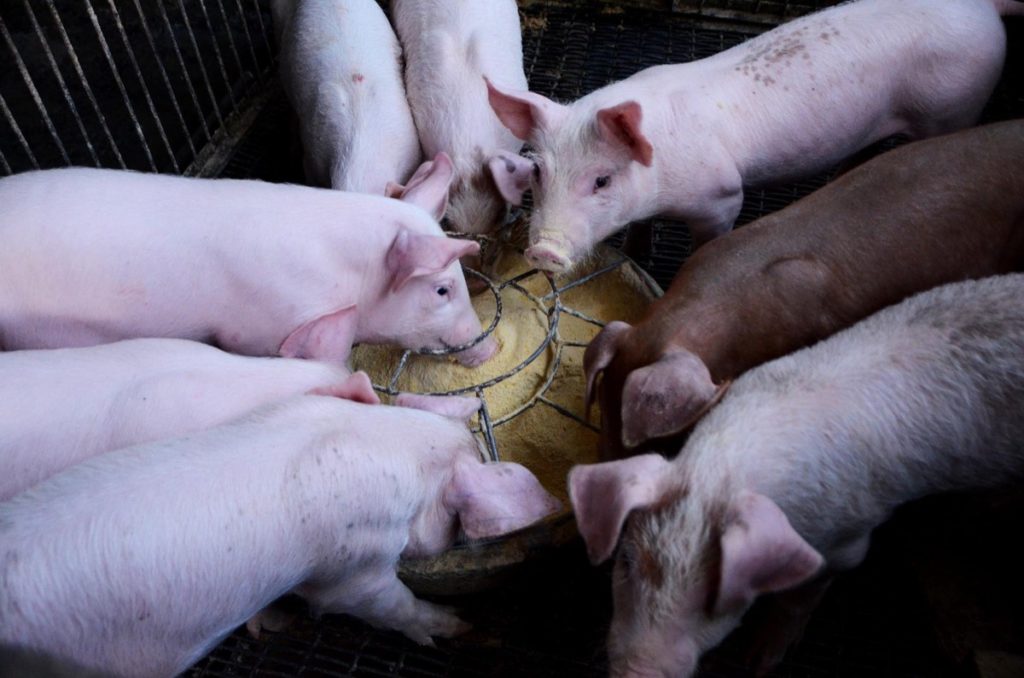
Support early immune system development – Newborn piglets receive passive immunity from the mother during pre-birth. After birth, passive immunity subsides over several days, stimulating the development of the innate immune system based on the initial colostrum intake. Piglets absorb the greatest amount of immunoglobulins from colostrum in the first 12 hours after birth. Over time, the amount of immunoglobulins in colostrum and milk decreases as the piglets have a chance to absorb them.
Ensure water supply is of adequate quality – Fresh, clean water is often overlooked when managing crops. Dwarfs need water just like pigs and growing and finishing pigs. A sow needs to drink 2.5 liters of water to produce 1 liter of milk. During gestation, a sow drinks about 15-20 liters of water daily.
Sows need more than 22 liters of water per day during the lactation period, depending on their litter size. An optimal environment (with optimum temperature, humidity, and airflow), a high level of biosecurity, and skilled labor is the only method to achieve high breeding results.
Factors to consider in pig farm construction
Housing – Proper design and construction of the pig house are critical to disease prevention. The drainage system should be designed so that water and sewage from one part do not enter the other part. Concrete floors should be sloped for proper drainage and ease of cleaning. Floors that allow standing water invite dirt and cleaning problems.
Solid partitions, especially the furrow section, and between individual hog houses will help prevent the spread of infectious diseases. Housing should be constructed with well-designed water and feed troughs; access to good quality water and constant water is essential for animal health.
Fencing – When pig farms are located very close to each other with no physical barriers such as fences between them, disease control measures become extremely difficult, as preventing the rapid spread of diseases is difficult. It becomes almost impossible to transfer between forms via vectors, such as people and animals, including dogs and rats.
It is not surprising, therefore, that outbreaks of diseases in such cases are almost routine and that the diseases in the country are all found in such areas. Therefore, all pig farms should be fenced. A simple chain-link fence should keep people and animals like dogs out.
Key factors can affect the type of pig farms
- Supply of suitable feed for pigs
- Ability to handle manure or other by-products from the pig operation
- Local beliefs or traditions, including religion
- The breed or type of pig available on the farm
- Local diseases or conditions that affect pig breeding or growth
- Local requirements, including government zoning and land use laws
- Local and global market conditions and demand
- Traditional farming styles and practices
Tips for reducing the pig production cost
Feed costs represent the largest input for producers, often up to 70% of production costs. Pig producers need to adapt their feed strategy to maximize feed efficiency.
Reducing feed costs for Pigs – The pressure to reduce feed costs and the constant effort to understand available feed ingredients better is the livestock industry’s biggest challenge today. Animals cannot fully utilize about 25% of the nutrients in feed because of anti-nutritional factors. With this in mind, producers worldwide use sustainable methods to meet demands for animal welfare and produce based on nutritional and economic factors (which are often different).
In case you missed it: Common Mistakes in Pig Farming: For First Time Pig Owners
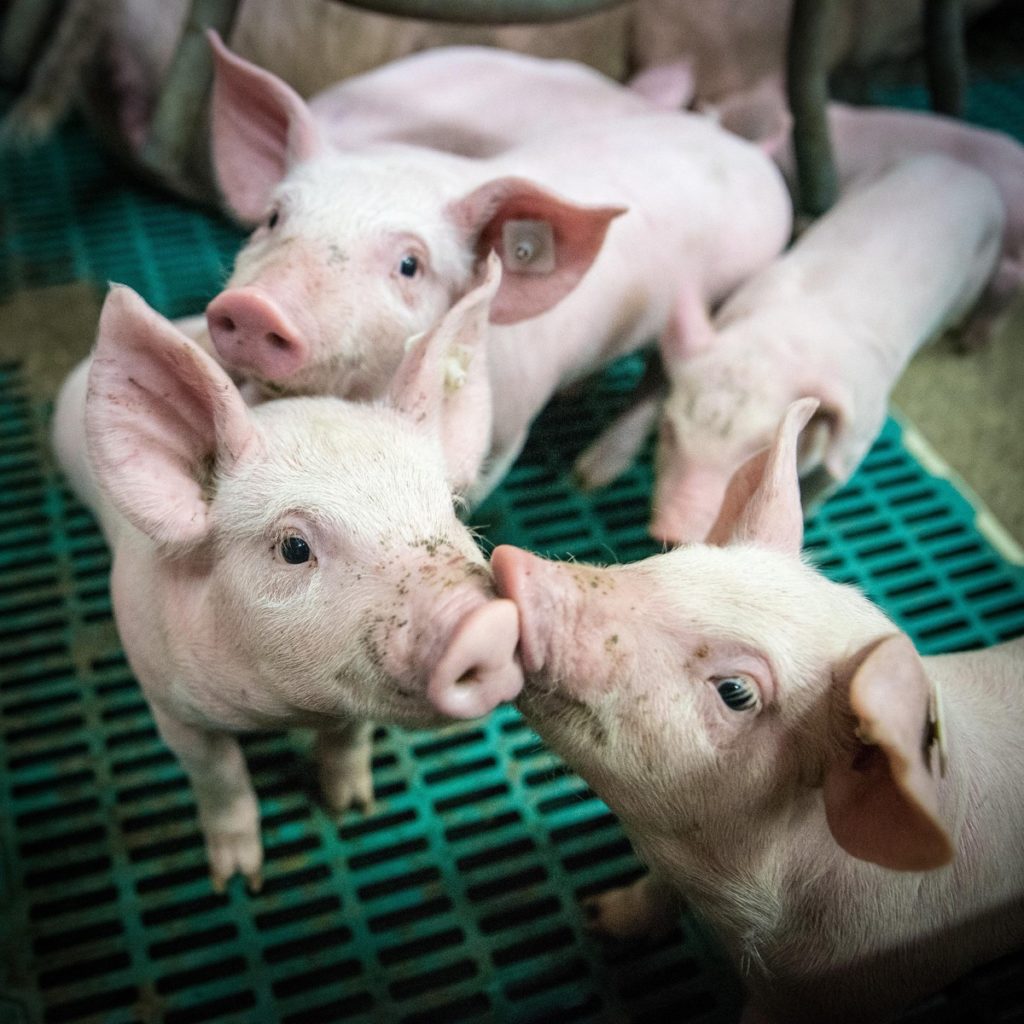
Pig producers may want to increase feed digestibility to manage short-term risks associated with low market prices. Helps increase feed digestibility:
- Provide more nutrients for pigs to absorb.
- Improve efficiency by allowing producers to get animals to market faster.
- Low food costs.
Improving pig performance, starting with sows – In recent years, genetics has played a major role in improving sow performance by increasing the number of pigs produced per sow each year. As litter size increases, pig birth weight decreases, and litter conversion increases. Reducing weaning variation helps the producers market pigs in a tighter window and decrease slaughter variation. Reducing variability at the time of slaughter also can reduce sorting losses at the processing facility and increase revenue per pig.
Optimizing water consumption – Pigs’ water consumption is just as important as their feed intake because pigs that don’t drink enough water don’t eat enough feed. Pigs drink about 10 percent of their body weight daily or about twice the amount of feed. Keeping the pH in a low range for long periods reduces the conditions that allow harmful bacteria to grow and thrive.
While many variables can affect production costs, understanding the factors that affect feed quality and implementing a quality assurance program will help ensure that your pigs receive the best nutrition. It will help the pig producer save more money in the long run.
Care practices for raising pigs
- Feed crepe feed with breast milk for the first 6-8 weeks.
- Protect pigs from extreme weather conditions, especially during the first two months.
- Needle teeth should be trimmed immediately after birth.
- Vaccinate pigs according to the recommended vaccination schedule.
- Iron supplementation is essential to prevent piglet anemia.
- Pigs intended for sale as breeder stock must be properly reared.
- Male pigs not selected for breeding should preferably be castrated at 3-4 weeks of age which will prevent the smell of pork in the cooked meat, thus enabling the production of quality meat.
In this pig farming business, you have to take care of the animals at every stage of life. Also, you have to keep farms free from all diseases and health problems. Therefore, proper deworming vaccination is a crucial step.
Key rules for safe handling of pigs
Feeding is an important aspect of commercial pig farming. Overall, animals’ health and growth rate depend on the availability of nutritious food. The main ingredients of pig feed are oats, grains, corn, wheat, rice, sorghum, and other millets. However, you should add some protein supplements such as oil cake, fish meal, and meat meal. Also, you can use packaged feed that comes with proper nutritional balance. A pig needs about 1.5-2 gallons of water per day over six months.
Buy productive pig breeds for effective piggery management
After setting up the farm, you need to buy pig breeds. All over the world, there are several breeds of pigs available on the market. However, it would help if you chose commercially good breeds for your farm.
The common pig breeds for commercial production are the Yorkshire, Landrace, Duroc, Tibetan, Tamworth, Hampshire, and Meishan breeds and their crosses. These breeds produce lean meat in combination with efficient feed conversion. These commercial breeds are less resistant to disease and more susceptible to hot weather and poor-quality feed.
In case you missed it: Pig Farming in Germany: How to Start, Tips and Ideas
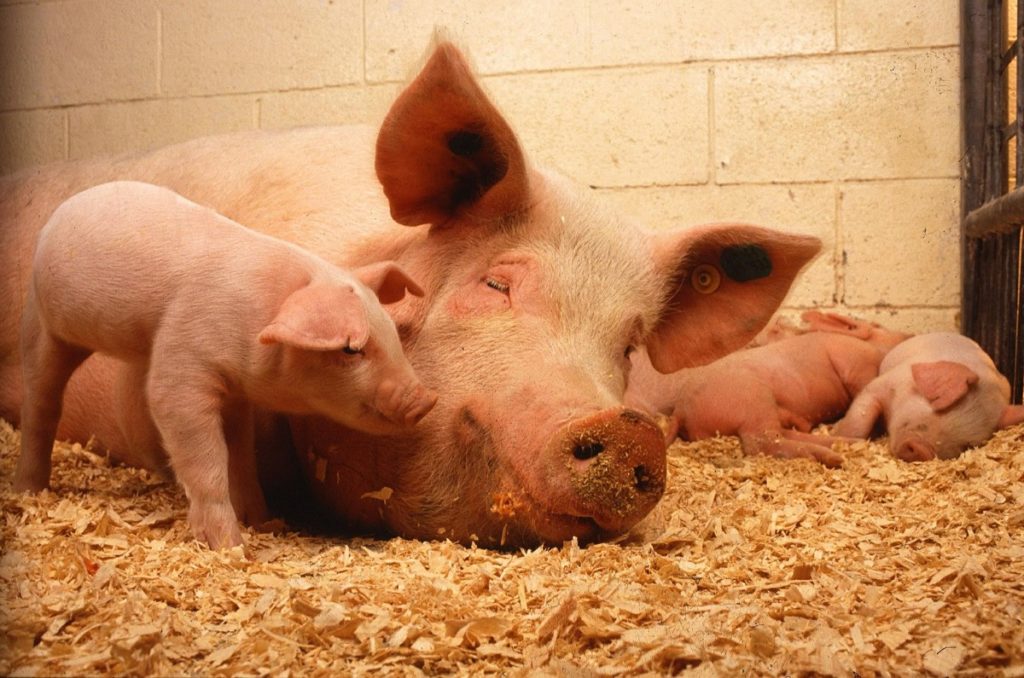
Effective pig farming business for more production
Starting a piggery business is easy and requires little capital/investment to build a house and purchase equipment. Pork is universally delicious and nutritious food. And the demand for meat is growing very fast. To start a business, you must prepare a business plan for your pig. Your plan should include an executive summary, business objective, market analysis, marketing plan, management and operational plan, and financial plan.
Creating a business plan is as easy as writing down an idea on paper. It involves writing about the various components in a way that would persuade a bank or individual to invest in a business venture. According to your business plan, you should have two things ready. One is space, and the other is financial resources. Firstly, you must choose the land to set up your pig farm.
Additionally, you should have a system to protect the farm from theft. Additionally, the location should have the availability of certain required resources. The list includes sources of clean water, electricity, proximity to markets, availability of veterinary doctors in the area, etc. Finally, check the transportation facility at that particular location.
It is most important to choose a location for a pig farm that is not close to a residential area. It is advised to the local authorities, and their approval is sought before establishing the distance. Additionally, ensure that the place is a pollution-free and noise-free environment. It increases the good and quality of the good and healthy production of pigs. Other factors to consider before making a choice are water supply and transportation costs.
Focus on marketing
When the pigs reach their slaughter age, you can easily sell them in the local and international markets as it is in high demand. However, the problem persists when you have to compete with other farming business owners. Suppose you have a good marketing campaign that will focus on promoting the quality of your product and the health safety measures adopted during pig rearing.
In that case, you will not only be in the local and national market but internationally. There will be more clients in the international market as well. In starting a pig business, you must have a marketing plan. Apart from local slaughterhouses, meat processing centers are potential customers. Additionally, you can contact local restaurants and hotels with large needs throughout the year. Additionally, you can also consider pig farming for organic meat production. Pig farming is becoming increasingly concentrated on fewer farms than in the past.
There are some large specialist pigs, many family-run units, and fewer farms (although still a large part of the total) with a small side-line piggery. Pork prices are sensitive to supply and demand for pork, ham, bacon, and small items. Some pork (about 30% of domestic production) is imported for use in cooked, bone-in products such as ham and bacon. Rapidly changing knowledge is a feature of the pork industry that producers must adapt to, managing the enterprise like a business.
Conclusion
Starting a pig business is a very profitable livestock business. Among the various livestock species, pigs are the most powerful source of meat production and are more efficient feed converters than broilers. The business ensures high returns to farmers. Pig farming will provide seasonally employed rural farmers with employment opportunities and additional income to improve their standard of living. The above rules are good for every farmer to know the effective management of pig farming and how to raise pigs.
- Economical Aquaculture: A Guide to Low-Budget Fish Farming
- 15 Common Planting Errors That Can Doom Your Fruit Trees
- How to Make Houseplants Bushy: Effective Tips and Ideas
- Innovative Strategies for Boosting Coconut Pollination and Yield
- Pollination Strategies for Maximum Pumpkin Yield
- The Complete Guide to Chicken Fattening: Strategies for Maximum Growth
- Natural Solutions for Tulip Problems: 100% Effective Remedies for Leaf and Bulb-Related Issues
- Revolutionizing Citrus Preservation: Towards a Healthier, Greener Future
- Natural Solutions for Peony Leaf and Flower Problems: 100% Effective Remedies
- Maximizing Profits with Avocado Contract Farming in India: A Comprehensive Guide
- Natural Solutions for Hydrangea Problems: 100% Effective Remedies for Leaf and Flowers
- The Ultimate Guide to Choosing the Perfect Foliage Friend: Bringing Life Indoors
- From Sunlight to Sustainability: 15 Ways to Use Solar Technology in Agriculture
- The Ultimate Guide to Dong Tao Chicken: Exploring from History to Raising
- The Eco-Friendly Makeover: How to Convert Your Unused Swimming Pool into a Fish Pond
- Mastering the Art of Delaware Chicken Farming: Essentials for Healthy Backyard Flocks
- 20 Best Homemade Fertilizers for Money Plant: DIY Recipes and Application Methods
- How to Craft a Comprehensive Free-Range Chicken Farming Business Plan
- Brighten Your Flock: Raising Easter Egger Chickens for Beauty and Bounty
- How to Optimize Your Poultry Egg Farm Business Plan with These Strategies
- Subsidy for Spirulina Cultivation: How Indian Government Schemes Encouraging Spirulina Farmers
- Ultimate Guide to Raising Dominique Chickens: Breeding, Feeding, Egg-Production, and Care
- Mastering the Art of Raising Jersey Giant Chickens: Care, Feeding, and More
- Ultimate Guide to Raising Legbar Chickens: Breeding, Farming Practices, Diet, Egg-Production
- How to Raise Welsummer Chickens: A Comprehensive Guide for Beginners
- How to Protect Indoor Plants in Winter: A Comprehensive Guide
- Ultimate Guide to Grow Bag Gardening: Tips, Tricks, and Planting Ideas for Urban Gardeners
- Guide to Lotus Cultivation: How to Propagate, Plant, Grow, Care, Cost, and Profit
- Agriculture Drone Subsidy Scheme: Government Kisan Subsidy, License, and How to Apply Online
- Ultimate Guide to Raising Araucana Chickens: Breed Profile, Farming Economics, Diet, and Care
- Bringing Hydroponics to Classroom: Importance, Benefits of Learning for School Students
- Ultimate Guide to Raising Polish Chickens: Breed Profile, Farming Economics, Diet, and Care
- Ultimate Guide to Raising Australorp Chickens: Profile, Farming Economics, Egg Production, Diet, and Care
- Silkie Chicken Farming: Raising Practices, Varieties, Egg Production, Diet, and Care
- Sussex Chicken Farming: Raising Practices, Varieties, Egg Production, Diet and Care
- Homemade Feed Formulations for Livestock: Discover Cost-effective Starter to Finisher Feed Recipes
Vegatable farm farmer help people to eat healthy food to grow healthy and strong. I was interested to grow vegatable to help my family. Thankyou for the farmers through out the world who contributed for the development of people to eat healthy fress produce. Thankyou
The information is really insightful. It has provided me with the guidance I badly needed. Thank you.
Very educative information every farmer needs.